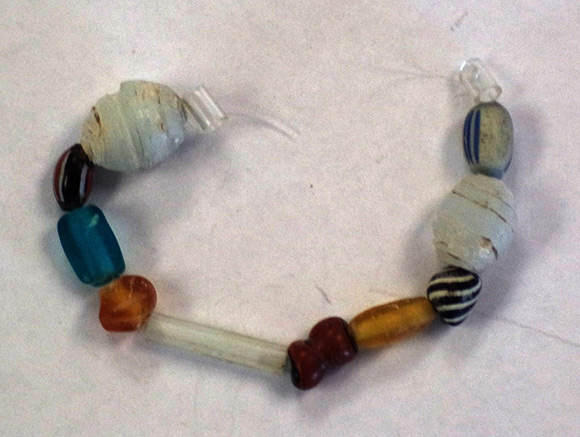Nearly 75,000 artifacts tell the story of Fort Frontenac
June 13, 2016
Breaking ground on a condominium project doesn’t always involve an international war. In the case of the Frontenac Village development in Kingston, it did — two wars, in fact. Formerly the site of New France’s Fort Frontenac and an adjacent harbour, the strategic site was a key base of operations during both the Seven Years War and the War of 1812.
The nearly 75,000 artifacts uncovered during the 1984 and other archaeological salvage excavations are now part of Canada’s national collection. “This archaeological collection embodies several very important chapters in Canadian history, not only the obvious military story, but also economic, social and cultural developments,” says Canadian Museum of History’s Curator, Central Archaeology, Jean-Luc Pilon.
The fort was important first to the French, then to the British and finally to the people of Canada.
Established in 1673 by Louis de Buade, the Comte de Frontenac and Governor of New France, Fort Frontenac served as an important western outpost to secure France’s fur trade network. Situated on Lake Ontario, the fort was constructed from wooden palisades and later walled with stone. The first ships to sail on Lake Ontario were built in the fort’s harbour.
For the next 150 years, the area would be a hotly contested region. The Iroquois viewed the soldiers in Fort Frontenac as a threat and besieged the fort in 1688. In the spring of that year, weakened by scurvy, the soldiers abandoned the post. The bodies of some of the fallen were discovered almost 300 years later during a construction project.
The French re-occupied the fort several years later, part of ambitious colonial plans stretching from Nova Scotia to the Gulf of Mexico. During the Seven Years War, British forces captured Fort Frontenac and attempted to demolish the stone work.
In the years that followed the handover of New France to Britain, military operations on Lake Ontario shifted first to Carleton Island and later to Fort Henry across the mouth of the Cataraqui River from the old French stronghold. The former Fort Frontenac fell into disuse. Through the years, the harbour was filled in. During the War of 1812, new barracks were built on top of the old fort. Today, the Canadian Forces Staff College occupies the same location.
A site with this much history is bound to leave evidence. The vast collection of recovered materials includes artifacts from every era, ranging from gun flints to well-preserved leather shoes and bags.
“The military hardware is balanced by items of everyday use that remind us that even on distant frontiers, people still had need for familiar things from home. Clothing and pieces of fine decorative ceramics such as faience allowed people to recreate some of what they’d left behind,” says Pilon.
The collection also includes complementary materials such as archaeology field notes and photographs that allow the objects to be understood in their original archaeological context. Pilon points to the importance of the collection, remarkable for its completeness. “Taken together,” he says, “artifacts, field notes and photographs will allow generations of scholars to revisit not only the history of Fort Frontenac and Kingston, but also the development of the country now called Canada.”
Image: During the New France era, Aboriginal Peoples would trade fur for a variety of merchandise including European glass beads like these ones found on an archaeological site at Fort Frontenac. Photo: Andrew Wollin, BFC Kingston